What is Die Cutting?
DIE CUTTING, by simple definition, is the process of using a die to shear webs of low-strength thin materials, such as rubber, foil, cloth, paper, films, pressure-sensitive adhesive tapes, and foam. Commonly produced items include gaskets and labels.
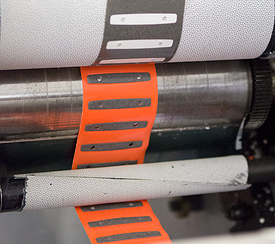
Worldwide, Marian has one of the largest "fleets" of die cutting machines. Our highly trained design, electrical and mechanical engineers manufacture our die-cutting equipment in-house in two well-equipped machine shops. We have been die cutting for over 50 years. We are very proud to be industry experts and offer our "die cutting 101" below.
Different Types of Die Cutting
Rotary Die Cutting
Rotary die cutting uses a cylindrical die on a rotary press. A long sheet or a web of material is fed through the rotary press into an area that holds a rotary tool that will cut out shapes, make perforations or creases, or even cut the sheet or web into smaller parts. Rotary die cutting creates the same part repeatedly at very tight tolerances.
Flat Bed Die Cutting
With flatbed die cutting shapes are stamped out of material utilizing steel rule dies that are adjusted accordingly to varying degrees of a hydraulic or mechanical press (Sometimes referred to as “clicking”). Advantages of flatbed die cutting are seen with lower quantities, larger die-cuts, and thicker materials.
Match-Metal Die Cutting
In match metal die cutting, materials pass through a cutting die constructed of a top and bottom die which are matched (male/female) to provide an extremely precise cut. Match Metal die cutting is typically used for higher volume applications that require extreme precision.
Compound Die Cutting
Compound die cutting performs multiple steps in one pass. The compound die-cut implements more than one operation during the cutting cycle.
Punch Press
In a punch press, the material runs through the press while a hydraulic ram at the top powers the die to cut the material. This type of die cutting is advantageous for speed and productivity.
Additional Capabilities of the Die Cutting Process
Multilayer Laminations with PSA
Multiple webs come together in a single pass to create a complex multi-layer part.
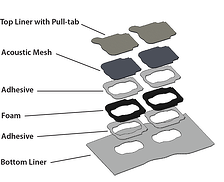
Zoned Adhesive
Custom patterns of adhesive are laminated to the material during the die cutting process, leaving adhesive only in the specified area(s).
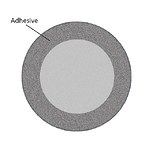
Kiss Cutting
Kiss cutting is a process where a laminated material is die-cut to the liner without cutting through the liner, leaving the die-cut part affixed to the liner. Parts can be rolled around a core on the liner making them easier to handle.
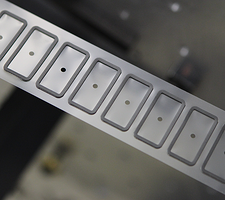
Pull-Tabs and Extended Liners
Materials with top and bottom liners are cut so that a portion of the liner is cut to extend the material to leave a pull-tab. This pull-tab contributes to ease of handling and placement.
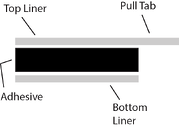
Perforation Die Cutting
This process does not fully trim the materials away from the original shape but instead creates a perforated area that remains in place until it is ready to be detached.
The variety of die cutting capabilities we offer enables us to provide innovative solutions to customers all over the world in a range of industries. Our material experts, engineers, and technical team can suggest the most innovative and efficient way to manufacture your component. Contact us today.


